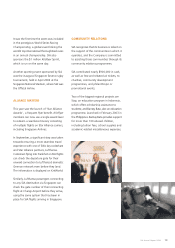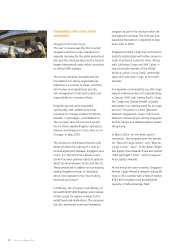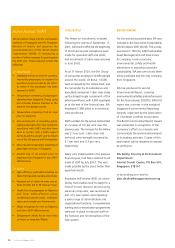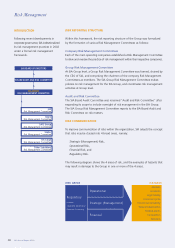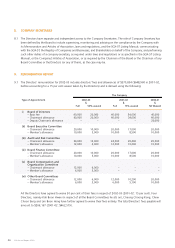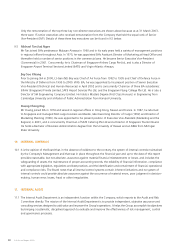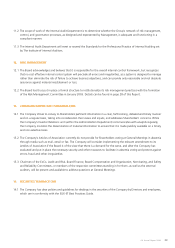Singapore Airlines 2003 Annual Report Download - page 31
Download and view the complete annual report
Please find page 31 of the 2003 Singapore Airlines annual report below. You can navigate through the pages in the report by either clicking on the pages listed below, or by using the keyword search tool below to find specific information within the annual report.
29
SIA Annual Report 02/03
RISK AREAS
Strategic Risk
These are risks that threaten the
long-term survival and well-being
of the Group, and may arise from
technological or geo-political changes,
inflexible or outmoded business models,
ineffective management and planning,
or other causes.
Operational Risk
These are risks that affect the activities
of the Group. Operational Risks may
be of internal or external origin that
interfere with the ability of the company
to produce or deliver its air transportation
services. They include "process" risks
such as ineffective systems and human
errors, and "resource" risks such as
damage or loss of IT capabilities, human
resources, physical assets, utilities and
infrastructure necessary for on-going
operations.
Financial Risk
These are risks that directly impact the
finances of the Company, and are
broadly classed into Market Risks (such
as interest rates, currency and market
price risks), Credit Risks (such as risk of
default of counter-party or debtors)
and Liquidity Risks.
Regulatory Risk
For SIA to maintain its air operator’s
certificate, which entitles it to carry on
its business of air transportation, it has
to comply with a host of regulations
in Singapore and elsewhere. These
regulations deal mainly with safety
issues – from airworthiness of aircraft
to training of crew to operation of
aircraft.
ANNUAL RISK MANAGEMENT
REVIEW
In December 2002, the Group carried
out its first formal Annual Risk
Management Review Exercise ("Review
Exercise"). The Review Exercise adopted
a bottom-up and top-down approach.
In the bottom-up approach, the risk
management process was applied
at Department levels to identify and
evaluate the risks that may cause a
failure to achieve corporate objectives.
The major risks at these levels were
then consolidated and reviewed at
Division levels before being further
raised to the Risk Management
Committees at company levels. In this
manner, risks that are significant and
material are brought to the attention
of senior management, while lesser
risks are managed at the appropriate
Division or Department levels.
The risks of the various companies
were then consolidated and reviewed
at Group level by the Group Risk
Management Committee before being
channelled to the SIA Board Audit
and Risk Committee and ultimately
to the Board.
The results of the Review Exercise did
not produce any surprises. The major
risks of the Group have been identified
and are being monitored closely.
BOARD OF DIRECTORS’ COMMENTS
ON THE PRACTICE OF RISK
MANAGEMENT IN
THE GROUP
Having reviewed the risk management
practice of the Group, the Board of
Directors is satisfied that risk management
in the Group is effective and that risks
are being satisfactorily addressed.
This process is applied at all levels in
the organization, and the objective is
to have this process embedded in the
everyday work process of all risk owners.
Detailed sub-processes for each of the
five steps are documented and taught
to users.
Oversight of risk management practice
and process application is carried out
with the assistance of the Internal Audit
Department to ensure that the processes
remain effective.
RISK FOCUSED APPROACH
The existing cross-company and cross-
divisional committees will continue to
focus on specific risk areas. Examples
of these are the Air Safety Committee,
Group Occupational Safety Health and
Environment Committee, Information
Security Steering Committee, Fuel
Tactical Committee, Revenue Protection
Committee, etc. These Committees are
chaired by senior management staff,
and draw their members from across
multiple divisions and departments to
leverage on multi-disciplinary experience
and expertise.
RISK MANAGEMENT PROCESS
To ensure consistency across the Group,
SIA adopts a simplified five-step risk
management process adapted from
international best practices as shown
below:
I
D
E
N
T
I
F
I
C
A
T
I
O
N
E
V
A
L
U
A
T
I
O
N
P
R
I
O
R
I
T
I
Z
A
T
I
O
N
R
E
D
U
C
T
I
O
N
R
E
V
I
E
W


